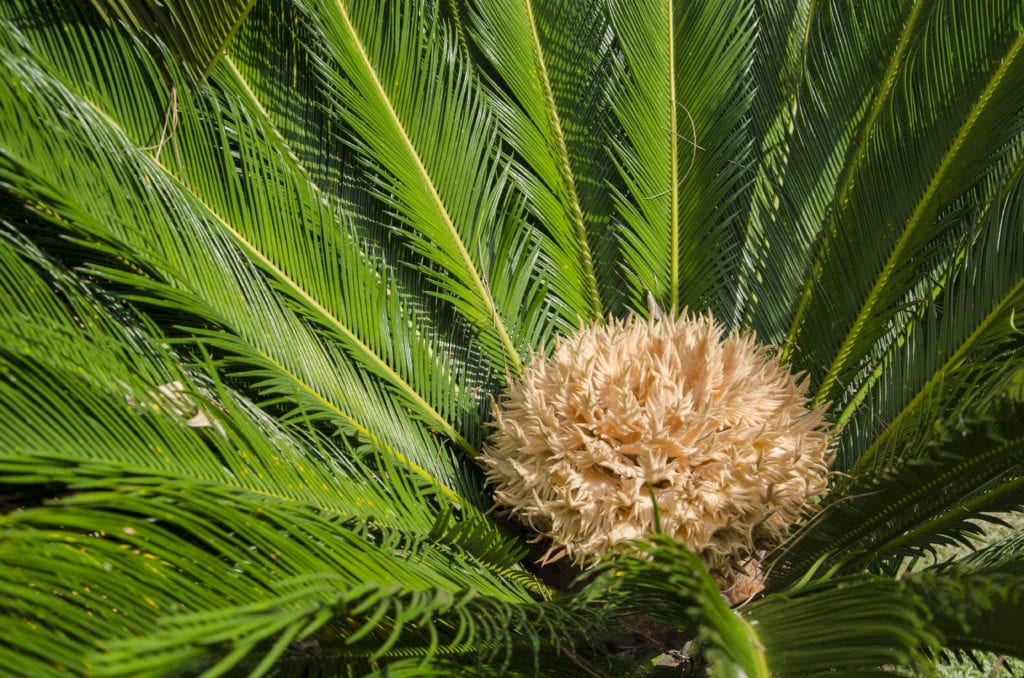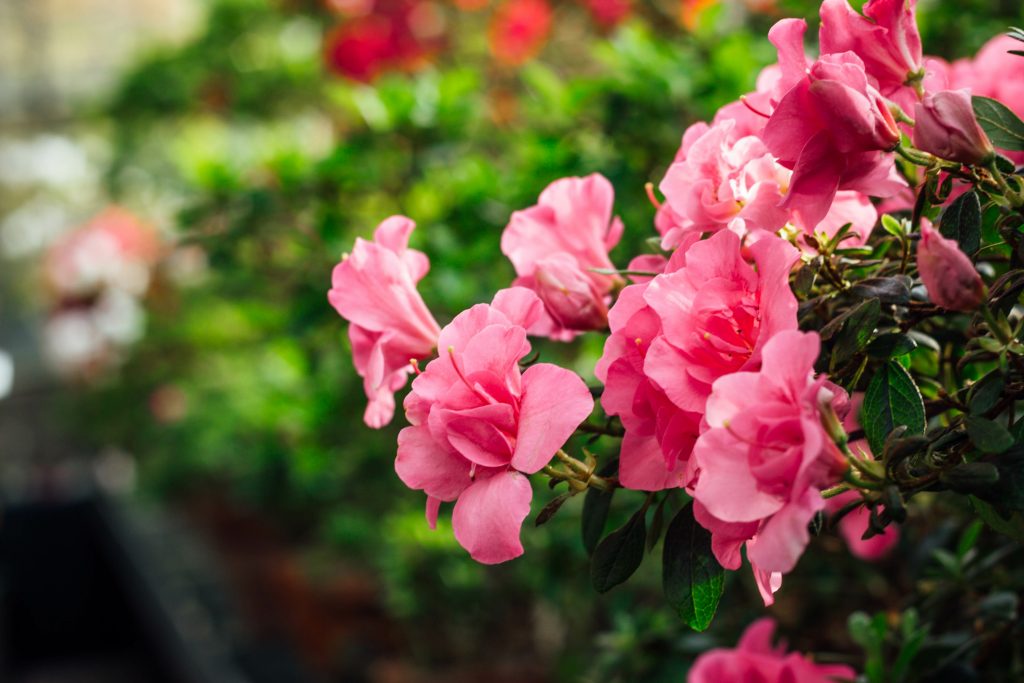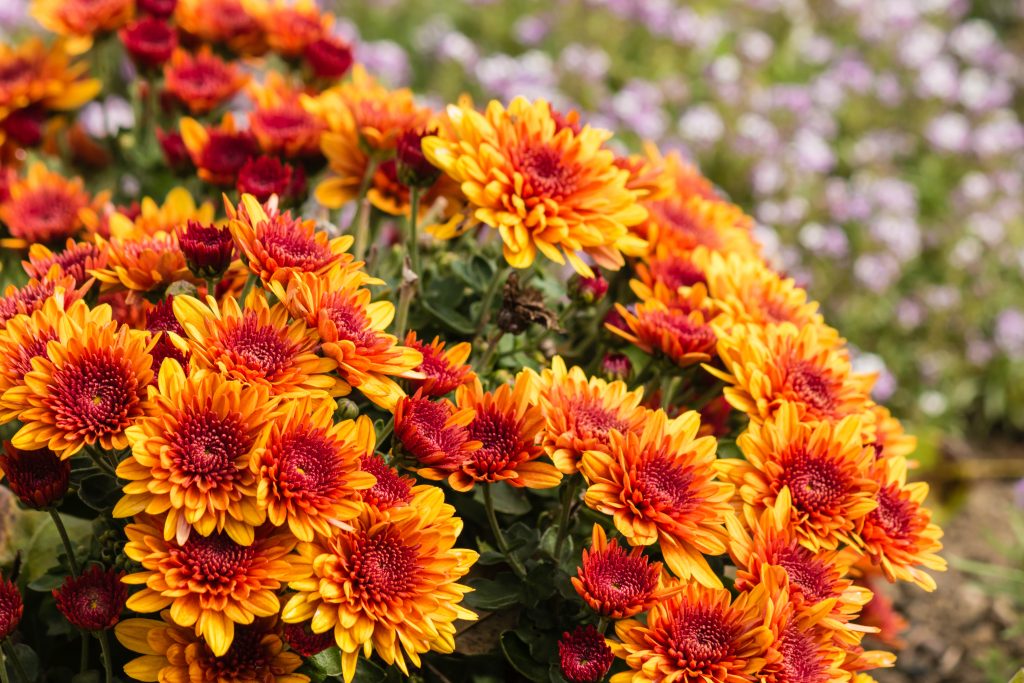Gardeners often put in plants because of their looks – lush green leaves, brightly coloured flowers, unusually textured foliage. But behind their good looks, some plants present a hidden danger for dogs, other animals and even humans if they are touched or, more likely in the case of dogs, ingested.
And sometimes, even small amounts being eaten can have tragic results.
Common house plant a deadly recipe

In 2017, then president of the Australian Veterinary Association, Dr Paula Parker, outlined a terrible scenario she had encountered involving dogs running amuck with cycads (pictured above).
“I saw three dogs from the same family poisoned by cycad plants. They had moved to a new property and were removing plants from the backyard. In the process, the Cycad plants were disturbed, and the dogs started playing with the roots,” Dr Parker explained.
“Their owners brought them into the veterinary clinic later that afternoon when they started to vomit. Even after just a few short hours, we could detect signs of liver damage.”
While two of the dogs were saved following “intensive treatment”, the third dog was not so lucky.
“Despite all of our efforts, over the next 12 hours his liver went into failure before our eyes,” Dr Parker said.
According to the prominent vet, “all parts of the Cycad plant including the seeds, roots, and leaves are toxic to animals”, making them a particularly dangerous addition to areas of the garden that dogs and pets can access.
Other plants poisonous to dogs
You may be surprised to learn that a huge number of plants are poisonous to dogs to some degree – including some of the most common plants in backyard gardens and plant nurseries.
Many if ingested by a dog will cause vomiting and/or diarrhea as well as “depression” or lethargy, and excessive drooling is another common symptom. But depending on both the type of plant and how much a dog actually ingests, toxic plants can lead to problems such as low blood pressure, impaired liver function, loss of co-ordination, inflammation, internal bleeding and even coma and death.
Here is a list of some of the more common varieties of plants found in Aussie homes and gardens that may be toxic to dogs, according to the Animal Emergency Centre, the American Society for the Prevention of Cruelty to Animals (ASPCA) and the Australian Veterinary Association:
Tulips. In fact, many bulbs don’t mix well with dogs, ranging from flowers (including daffodils, amaryllis and iris) through to vegetables like onions.
Lilies. This includes the peace lily and some other types of lily. Liliums are also toxic to cats in particular.

Azaleas (pictured above). These are one of the most common plants in the Aussie garden, but they are a big no-no for dogs. The same goes for their close relation the rhododendron.
Oleander. This is perhaps one for the best-known poisonous plants. Keep pets – and children – well away from these ones.
Holly and mistletoe. these seasonal plants are for show only. The prickly holly leaves are just another reason to keep them separate from your dog.
English ivy. Ivy is known as being an irritant to humans, both to the skin when touched and the spores/dust from its branches and sticky roots. But the leaves in particular are quite toxic to pets if ingested.
Tomato plants. Tomatoes are said to be the most widely consumed fruit in the world, but the plants can be poisonous to dogs. Also toxic to dogs in the veggie patch are potato plants and green (unripe) potatoes.
Aloe vera. Despite its medicinal properties for soothing skin ailments and sunburn, aloe vera is not something you want your dog chomping on.
Jade plant. Also known as the money plant or lucky plant, the jade plant is anything but lucky if swallowed by your dog and will require immediate treatment by your vet.
Philodendron. It’s not just outdoor plants that can be toxic to dogs (as well as cats and other pets). Philodendrons are a prime example of indoor plants that are unhealthy for dogs to chomp on.
Peace lily. If your pet has tucked into a peace lily or some other type of lily, the symptoms can be quite recognisable, given the significant irritation it causes to the mouth and throat, which can lead to difficulty swallowing, in addition to excessive drooling and potential vomiting, the Animal Emergency Centre states.
Kalanchoe. These colourful plants don’t mix well with a pet’s digestive tract and can cause other complications if ingested.
Hydrangea. Another favourite for many gardeners, these lush plants are highly dangerous to pets if eaten, because believe it or not, they contain cyanide.
Cyclamen. All parts of the plant are poisonous, but the roots are the most dangerous for dogs.

Chrysanthemum (pictured above). Fans of the hit TV show The Big Bang Theory may recall Sheldon suggesting he had a case of “accidental ingestion of chrysanthemum blossoms” (it proved to be just gas). But the reality is that these colourful flowers – which are particularly common around Mother’s Day in Australia – are highly toxic, including for our pets. Vomiting and diarrhoea can be accompanied by other debilitating symptoms, including tremors and even seizures.
Wandering Jew. This is more of an allergen to be wary of, causing nasty skin rashes and itchiness for dogs, especially in areas that have little to no fur.
Marijuana. Ok, you’re far less likely to encounter this one. But it’s worth finishing off our list by noting that the Cannabis plant is not good for pets. If eaten, it can cause the same irritation that most other plants on this list do – vomiting, diarrhoea and drooling – in addition to impacting the central nervous system, all while increasing heart rate. Ultimately, seizures and coma are possible.
Sources:
ASPCA
https://www.aspca.org/pet-care/animal-poison-control/dogs-plant-list
Animal Emergency Centre
https://www.aecvets.com.au/wp-content/uploads/2019/09/Common-Plant-Toxins-2016.pdf
Australian Veterinary Association
https://www.vetvoice.com.au/media-releases/protect-your-pets-from-poisonous-plants/
Burke’s Backyard










